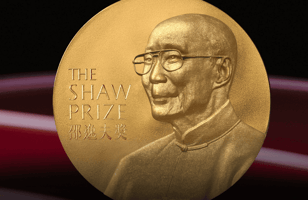During the COVID-19 pandemic, social media was an exceptionally powerful tool for scientists.
Top five hurdles faced by early-career researchers
Frozen grants. Labs on pause. Cancelled research projects.
Sound familiar? It’s a reality very familiar to researchers in the 2020s—both because of the coronavirus pandemic, and because of fresh orders out of the Trump administration.
This challenging reality makes the gap between a freshly minted PhD and a fully tenured professor as daunting as ever. And so is the gap between a young professional researcher and the veteran manager with twenty years of experience at the same institution.

The many years and steps in between these respective positions involve securing funding, publishing in high-impact journals, gathering a research team, networking at conferences and conventions, establishing relationships with leaders at a variety of institutions, receiving and giving mentoring and teaching, and a litany of other tasks and milestones.
To begin with, getting a science PhD in 2025 has plenty of uniquely 21st century challenges. And the academic job market is as daunting as ever. But the next phase after that is perhaps the most difficult yet: establishing one’s research and path as an early-career scientist. In this article, we identify the five biggest challenges facing young researchers out in the “publish or perish” market—along with expert tips and solutions for putting your best foot forward.
1. Funding
Federal funding for major science agencies is at a twenty-five year low. Specifically, the National Science Foundation, the US Department of Energy Office of Science, and the National Institute of Standards and Technology—which fund the majority of basic and applied research in key areas such as computing, climate change, and national security—are expected to end up 28% short compared to 2024. New executive orders from President Donald Trump are threatening to skyrocket this shortage.
Trump’s administration says that they are “reviewing” research money, but in the meantime, federal grants are effectively shut down, with an incredible $47 billion on hold. As a consequence, universities like the University of Pittsburgh have frozen PhD admission, and Columbia University has paused hiring and spending. Yale University opened up new internal “bridge” funding initiatives to cover research funding gaps, but that makes it a rare institution (so far) offering a temporary solution.
Peer-reviewed research agrees that this puts a strain on scientists, showing the decline in institutional funding rates as increases in budget fail to keep up with growing pools of grant applicants, even outside of the U.S.One global survey even showed that 86% of researchers lack sufficient funding for their research.
These difficult economic realities hit young researchers especially hard. Winning a competitive fellowship for early-career researchers tends to supply funds that only partially cover a full researcher salary. Meanwhile, when institutions reduce their funding to support research, usually the funds dedicated to early-career researchers are the first to go.
To combat this trend, institutions need to prioritize preserving and creating new funds for early-career researchers. Funding agencies need to set forth concrete guidelines that account for pandemic-induced slowdowns to early-career researcher productivity, without which, many researchers would be judged by an unfair standard. Universities and funders should also consider taking on more basic facility costs for on-campus equipment and services, so researchers do not have to seek additional funding or pay out of pocket. This small step would increase resource efficiency while taking a major cost burden off early-career researchers’ backs.
2. Work overload
Early-career researchers face a simple but serious problem: they have to work too many hours. Since postdocs have a variety of responsibilities including lab work, researching and reading, writing, teaching and supervision, grant-writing, and administrative tasks, they often work well over their contractually stipulated hours. This is the result of passion, but it can lead to burnout and mental health issues in the long term.
There are several complex factors at play. Firstly, early career researchers often have heavy teaching and administrative workloads that conflict with their ability to produce research in order to advance their careers. One study said that young researchers teach as many as four courses. Contributing to this is a lack of quality, affordable childcare: since childcare costs exceed 40% of postdoctoral salaries on average, early-career researchers who are also parents shoulder even heavier burdens. One study showed that two researchers only spent 35% and 50% of their respective time on lab work, data analysis, and writing.

Image from Elisa Granato & Christoph Ziegenhain
Some studies suggest that universities should consider temporarily exempting early-stage researchers from academic service responsibilities and administrative tasks. This would allow them to focus more on research, advancing their academic careers and gaining a solid ground as researchers within their institutions. Since such responsibilities tend to fall disproportionately to female researchers, this policy would also promote gender parity.
3. Inadequate mentorship and networking opportunities
In a recent survey of early-career researchers, those surveyed put a large priority on collaboration. Over 60% of respondents expressed an interest in additional collaborative opportunities, but stated they lacked the funding and opportunities to pursue them. This trend may have been exacerbated by the coronavirus pandemic, reducing interactions between researchers and collaborators, stalling projects, and leaving trainees feeling lost and unsure of how to advance their careers.
Lack of mentorship is a particularly acute problem. Poor mentorship in the university system causes young researchers to have issues with academic writing and career progression in particular. This trend is detrimental to universities at large, as good mentorship sustains and improves excellent academic programs by building up the next generation of leaders.
Some academics have suggested that scientific conferences give an increased priority toward presentations by diverse early-career researchers, and potentially waiving conference fees for these researchers.
4. Promotion and tenure
The academic job market has been in sharp decline for forty years, especially for desirable tenured positions. A severe misalignment of the supply of PhD-qualified academics and demand for available positions collided in the 2010s. Still, the situation isn’t all doom and gloom: the Bureau of Labor Statistics anticipates postsecondary teaching jobs to have a 10-year growth rate of 12 percent.

Image from Life of a Professor
Nevertheless, early-career researchers face a few unique difficulties layered on top of an already-challenging reality of career progression. Publishing articles is a must, but rejection rates at top journals currently hover around 80%. The pandemic also disrupted productivity, causing months and even years of lost research. No small number of early-career researchers ended up with unfortunate gaps on their resumes, through no fault of their own.
Experts argue that universities need new policies and guidelines on the seven-year “tenure-clock” that take pandemic-era considerations into account. This could mean including new criteria that qualifies for tenure review criteria, such as preprint publishing or translations. It could also mean allowing tenure-track candidates to prioritize either teaching or research for their evaluation, rather than everything at once.
Meanwhile, early-career researchers can consider presenting their work at conferences or on social media, developing new avenues to expand their career networks.
5. The world of research is as big as ever
Well over three million scientific articles were published in 2022 alone; the total number of open access papers exceeded a whopping nine million in 2023. The number of students entering higher education is also growing at a remarkable rate. A simple research review means confronting tens, hundreds, or even of thousands of scientific articles and discoveries. Finding an original research niche and standing out in a crowd of competitive scientists is a tall order for today’s early-career researchers.
But even slight improvements can go a long way. Fewer funding concerns, a better-balanced workload, improved mentorship opportunities, and updated guidelines for promotion would give early-career researchers an excellent shot at achieving their dreams: leaving an impact on the world with innovative scientific discoveries.
Researchers should be sure to make a strong use of technology to navigate these challenges. Research alert services and generative artificial intelligence can provide big productivity boosts, when used correctly. NewsRx’s BUTTER platform allows scientists to create custom alerts to track any scientific topic, providing access to 30 years of coverage of high-quality peer-reviewed studies, patents, clinical trials, company announcements, and more.
A daunting world of research is also an exciting one, where discoveries that change the world are just around the corner. Learn more about the unique challenges and opportunities facing the 21st century scientist here.

.jpg?width=50&name=DSC_0028%20(1).jpg)

